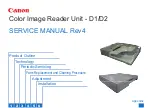
FastTrak TX2000™ User Manual
1
Introduction
The PC which you are using either already contains a Promise Technology
FastTrak TX2000
RAID card installed by a third-party or you have acquired a FastTrak TX2000 retail product for
your existing PC and will be installing the card yourself.
For PC owners wishing to install their Promise Technology
FastTrak TX2000 card, proceed to
the
Quick Start
section (see page 5).
For PCs with a Promise Technology
FastTrak TX2000 card already installed, consult the
Troubleshooting
section of the manual (see page 49) if you are experiencing any difficulties
with the hard drive being recognized by the card. If your operating system has crashed for
some reason or you have downloaded updated drivers from the Promise website
(www.promise.com), you may wish to reinstall software drivers for the FastTrak TX2000 card.
Use the
Installing Drivers
section (see page 30).
What is the FastTrak TX2000 RAID Card?
Promise originally designed the FastTrak TX2000 card as a cost-effective, high performance
RAID card that adds performance and/or reliability to PC desktops and/or servers using Ultra
ATA/133, Ultra ATA/100, Ultra ATA/66, or EIDE drives. The FastTrak TX2000 offer some major
performance differences as described below.
The FastTrak TX2000 supports motherboards that offer a 66MHz PCI bus (versus the
traditional 33MHz bus) and the capability of transferring data across the PCI bus at speeds up
to 266MB per second (versus the previous 133MB per second). As Ultra ATA/133 drive
performance continues to improve, the use of the Promise ATA RAID card in a 66 MHz PCI slot
will allow data transfers to exceed the older 133MB. Of course, the FastTrak TX2000 is
backward compatible with standard 33MHz PCI slots.
The FastTrak TX2000 offers two independent data channels to support a maximum of four Ultra
ATA drives. FastTrak TX2000 supports striping (RAID 0), mirroring (RAID 1), striping/mirroring
(RAID 0+1), or spanning (JBOD) operation, respectively. With striping, identical drives can read
and write data in parallel to increase performance. Mirroring increases read performance
through load balancing and elevator sorting while creating a complete backup of your files.
Striping with mirroring offers both high read/write performance and fault tolerance. Spanning
uses the full capacity of all attached drives without requiring identical drive size, but offers no
other RAID functionality.
A FastTrak TX2000 striped array can double the sustained data transfer rate of Ultra ATA/133
drives. FastTrak TX2000 fully supports Ultra ATA/133 specification of up to 100 MB/sec per
drive, depending on individual drive specifications.
All FastTrak TX2000 models also offer fault tolerant, data redundancy for entry-level network
file servers or simply for desktop PC users wanting to continually protect valuable data on their
PC. Each FastTrak TX2000 model offers RAID 1 mirroring (for two drives) and RAID 0+1
mirroring plus striping (for four drives) to protect data. Should a drive that is part of a mirrored
array fail, FastTrak TX2000 uses the mirrored drive (which contains identical data) to assume
all data handling. When a new replacement drive is later installed, FastTrak TX2000 rebuilds
data to the new drive from the mirrored drive to restore fault tolerance.
When attached drives are used with optional Promise SuperSwap(tm) "hot" swap chassises,
the FastTrak TX2000 models allow replacing a failed drive without shutting down the PC
operation under RAID 1 mirroring
Содержание FastTrak TX2000
Страница 1: ...Ultra ATA 133 RAID Card User Manual Version 1 3 ...
Страница 46: ...FastTrak TX2000 Series User Manual 42 ...
Страница 60: ...FastTrak TX2000 Series User Manual 56 NOTES ...
Страница 70: ...FastTrak TX2000 Series User Manual 66 ...






































